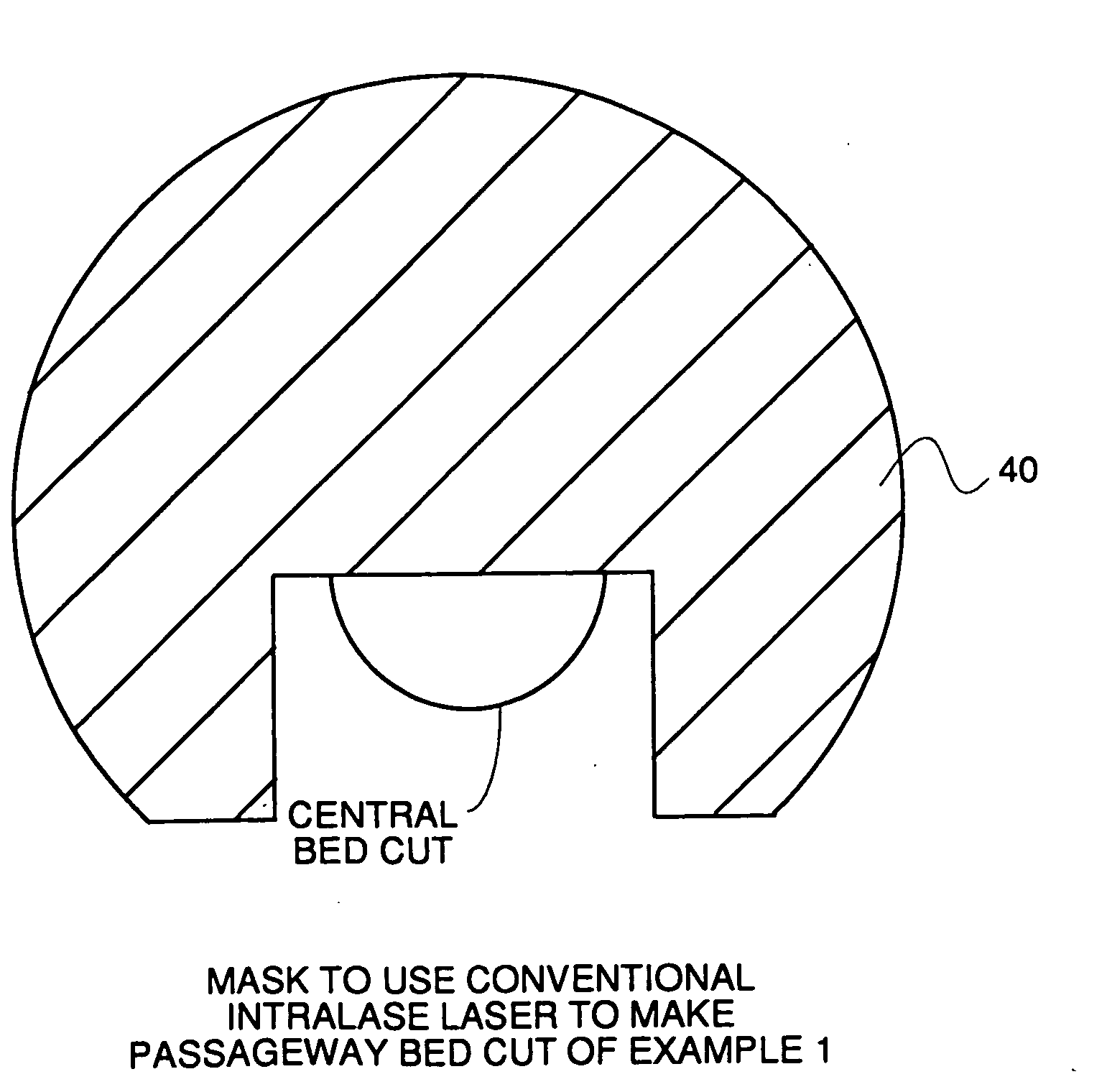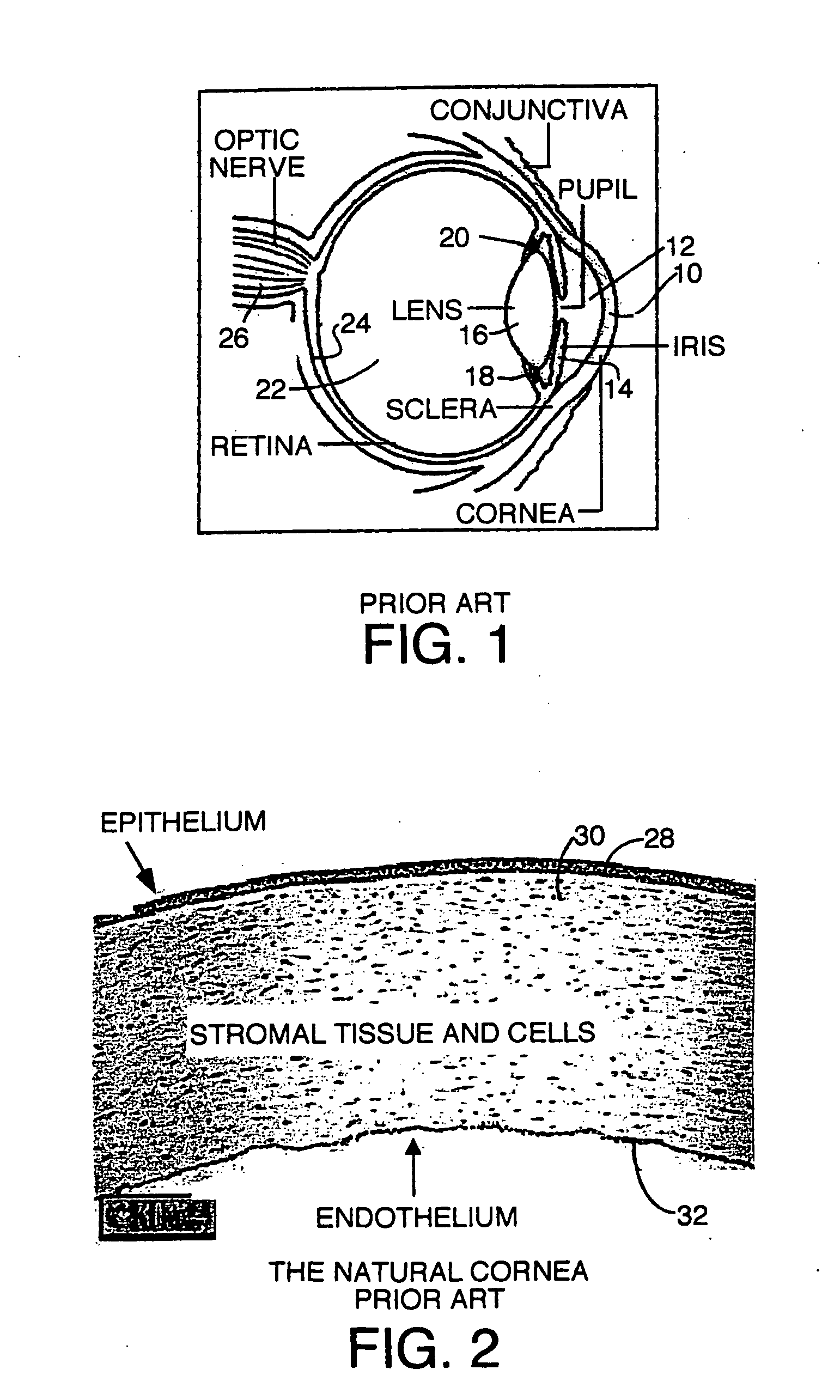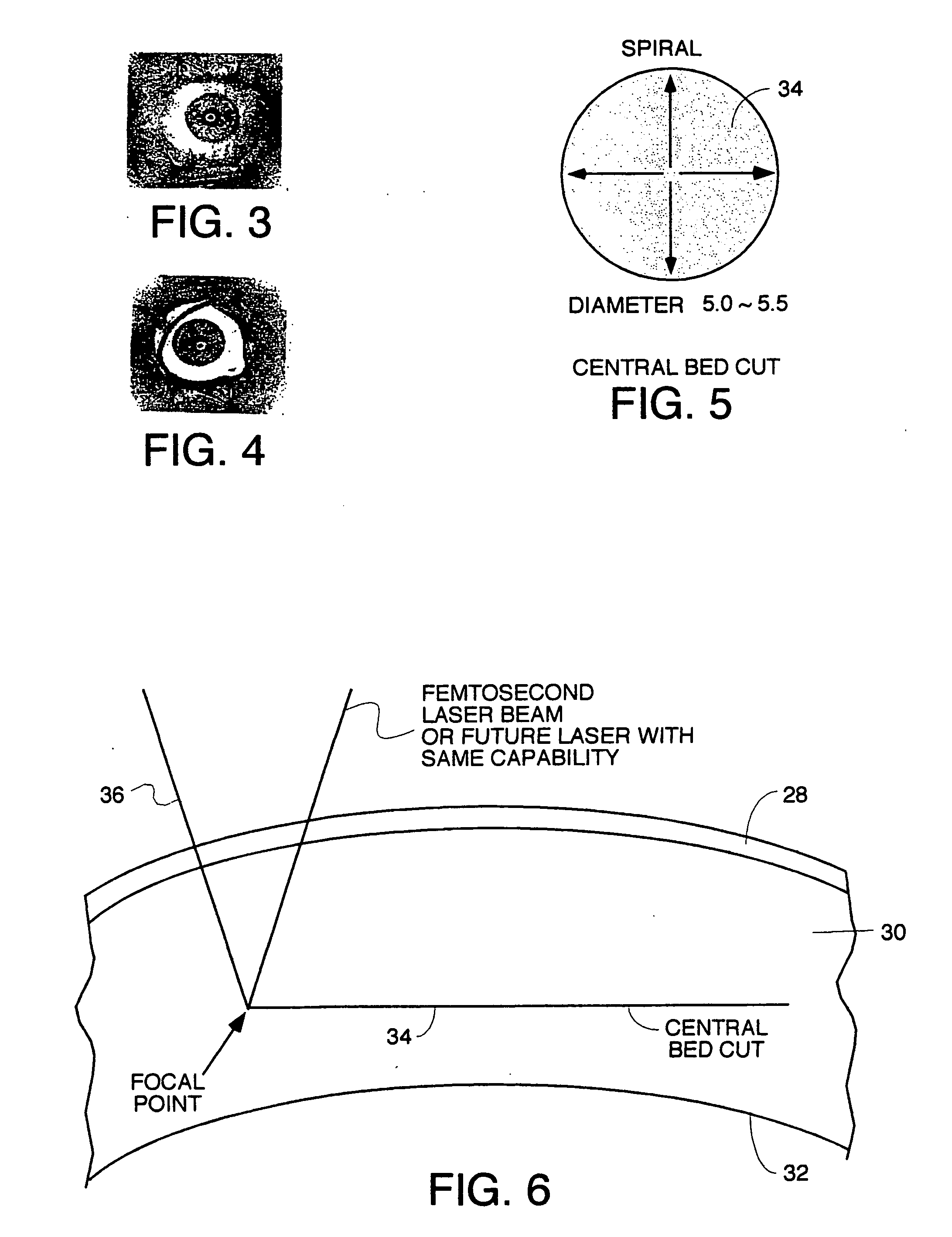Surgical procedure and instrumentation for intrastromal implants of lens or strengthening materials
a technology of intrastromal implants and surgical procedures, applied in the field of intrastromal implants, can solve problems such as weakening of the structural integrity of the cornea, and achieve the effects of high permeability to oxygen and glucose, sufficient structural strength, and high strength and elasticity
- Summary
- Abstract
- Description
- Claims
- Application Information
AI Technical Summary
Benefits of technology
Problems solved by technology
Method used
Image
Examples
Embodiment Construction
[0039]A schematic diagram of the human eye is shown in FIG. 1. The cornea 10 is the site where the surgical procedure will be performed. The cornea lies in front of the aqueous humor 12, the iris 14 which regulates the amount of light then enters the eye and the crystalline lens of the eye 16. The ciliary muscles that stretch the crystalline lens to change its shape are shown at 18 and 20. The vitreous humor 22 fills the eyeball and is a jelly-like substance which gives the eyeball its firmness. The retina is shown at 24 and lines the back of the eyeball. The retina is where the focused image is supposed to be if everything is perfect. The retina's rods and cones (not shown), sense the light pattern and send nervous signals to the brain on the optic nerve 26. The intraocular pressure exists in the area of the vitreous humor 12.
[0040]FIG. 2 is a diagram of the prior art natural cornea. The cornea is covered with a thin layer 28 called the epithelium. This layer is 4-5 cell layers thi...
PUM
 Login to View More
Login to View More Abstract
Description
Claims
Application Information
 Login to View More
Login to View More - R&D
- Intellectual Property
- Life Sciences
- Materials
- Tech Scout
- Unparalleled Data Quality
- Higher Quality Content
- 60% Fewer Hallucinations
Browse by: Latest US Patents, China's latest patents, Technical Efficacy Thesaurus, Application Domain, Technology Topic, Popular Technical Reports.
© 2025 PatSnap. All rights reserved.Legal|Privacy policy|Modern Slavery Act Transparency Statement|Sitemap|About US| Contact US: help@patsnap.com



